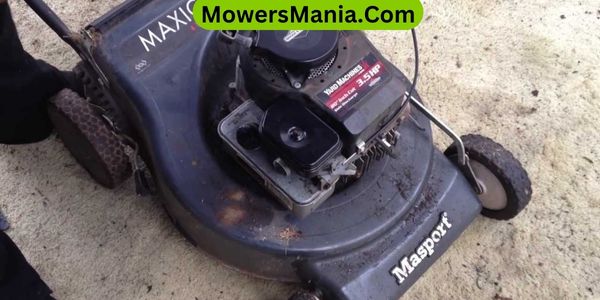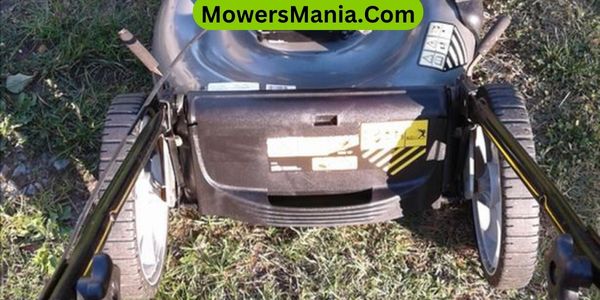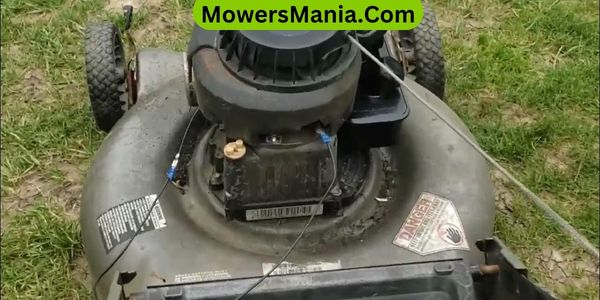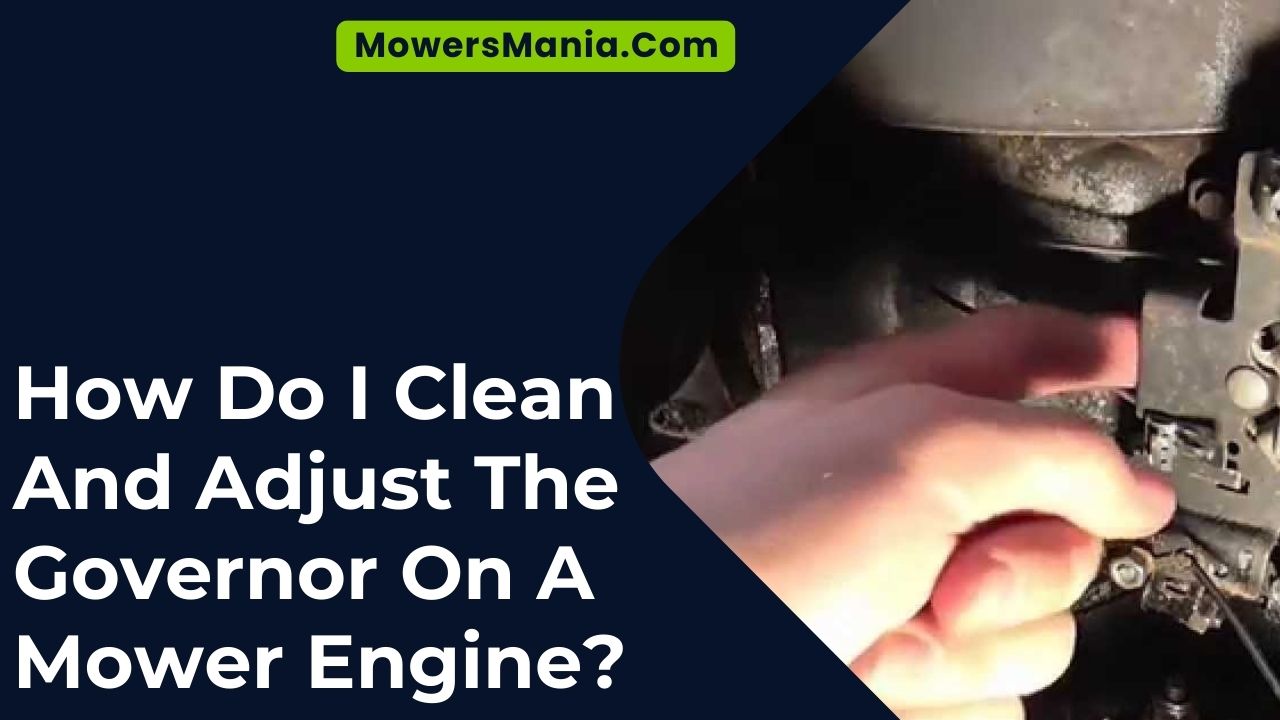You know the saying, ‘A stitch in time saves nine.’ When it comes to maintaining your mower engine, this adage couldn’t be more fitting. Your mower’s governor plays a crucial role in regulating the engine’s speed and ensuring smooth operation.
However, over time, it can become clogged with dirt and debris, causing it to function improperly. So, what can you do to ensure your mower’s engine runs at its best?

Well, it all starts with understanding how to clean and adjust the governor. And trust me, it’s not as complicated as it may seem.
Understanding the Governor and Its Function
To understand the governor and its function, think of it as the traffic controller of your mower engine, regulating the speed and preventing it from running too fast or too slow.
When you increase the throttle on your mower, it opens the engine’s throttle valve, allowing more air and fuel into the engine to increase power.
The governor monitors the speed of the engine and adjusts the throttle to maintain a consistent speed, preventing the engine from racing or bogging down. It achieves this by using a system of springs and levers to control the throttle based on the load applied to the engine.
If the load increases, such as when you mow through thick grass, the governor opens the throttle to maintain the engine speed. Conversely, when the load decreases, the governor decreases the throttle to prevent the engine from overspeeding.
Understanding the governor’s role in regulating engine speed is crucial for maintaining optimal performance and preventing damage to the mower engine.
Tools and Materials Needed for Cleaning and Adjustment
When cleaning and adjusting the governor on a mower engine, gather the necessary tools and materials before starting the process.
Here’s a list of essential tools and materials that you’ll need:
| Tools | Materials | Additional Items |
|---|---|---|
| Screwdriver | Clean rags | Safety gloves |
| Wrench | Carburetor cleaner | Eye protection |
| Pliers | Lubricating oil | Work gloves |
Having a screwdriver is crucial for removing the governor cover, while a wrench will help in loosening the governor arm.
Pliers will come in handy for disconnecting the governor spring. Ensure you have clean rags to wipe off any dirt or grease, and carburetor cleaner to thoroughly clean the governor components.
Additionally, lubricating oil will help in ensuring smooth movement of the governor parts. Don’t forget to wear safety gloves and eye protection to safeguard yourself from any potential hazards.
Disassembling the Engine Components

After gathering the necessary tools and materials for cleaning and adjusting the governor on a mower engine, disassembling the engine components is the next crucial step in the maintenance process.
Start by disconnecting the spark plug wire to ensure the engine doesn’t start accidentally. Then, remove the engine cover and air filter to access the governor assembly.
Next, detach the governor linkage from the throttle lever and the governor arm. You may need to loosen the governor arm’s mounting bolts to access the internal governor components.
Once the governor assembly is accessible, carefully inspect it for any signs of dirt, debris, or damage. Clean the components thoroughly using a suitable solvent and a clean cloth. Additionally, check for any worn or damaged parts that may need replacement.
After cleaning and inspecting the governor assembly, reassemble the engine components in the reverse order, ensuring that all connections are secure and the governor linkage is properly adjusted.
This meticulous disassembly and cleaning process will help ensure that your mower engine runs smoothly and efficiently.
Cleaning and Inspecting the Governor Assembly
Inspect the governor assembly carefully for any signs of dirt, debris, or damage before proceeding with the cleaning process. Start by removing any visible dirt or debris using a soft brush or compressed air. Pay close attention to the linkage and springs, ensuring they move freely without any obstructions.
Next, use a mild detergent solution and a clean cloth to wipe down the governor assembly, removing any stubborn grime or residue. Avoid using harsh chemicals that could damage the components.
Once the assembly is clean, inspect it for any signs of wear or damage, such as frayed linkage or bent components. Any damaged parts should be replaced to ensure proper functioning of the governor.
Additionally, check for proper alignment and secure mounting of the assembly to the engine. Finally, lubricate the moving parts with a light machine oil to ensure smooth operation.
A clean and well-maintained governor assembly is crucial for the proper functioning of the mower engine, so take the time to inspect and clean it thoroughly.
Adjusting the Governor for Optimal Performance

To optimize the performance of your mower engine, carefully adjust the governor settings in accordance with the manufacturer’s specifications.
Proper adjustment of the governor is crucial for ensuring that your engine runs at the right speed, maximizing both efficiency and effectiveness.
Here’s how you can adjust the governor for optimal performance:
- Achieve Smooth Operation: By fine-tuning the governor settings, you can ensure that your mower engine runs smoothly, providing you with a seamless and hassle-free mowing experience. This can help reduce frustration and enhance your overall satisfaction with the performance of your mower.
- Extend Engine Lifespan: When the governor is correctly adjusted, the engine operates within the recommended speed range, preventing excessive wear and tear. This can give you peace of mind, knowing that your engine is being protected and its lifespan is being extended.
Frequently Asked Questions [FAQs]
Can I Use Any Type of Cleaning Solution to Clean the Governor Assembly, or Are There Specific Products I Should Use?
You can use a general-purpose cleaning solution to clean the governor assembly, but it’s best to use a specific product recommended by the mower’s manufacturer for optimal results and to prevent any potential damage.
How Often Should I Clean and Adjust the Governor on My Mower Engine for Maintenance?
You should clean and adjust the governor on your mower engine at least once a season for maintenance. Using a specific cleaning solution designed for small engines can help keep it running smoothly.
Is It Necessary to Replace Any Parts of the Governor Assembly During the Cleaning and Adjustment Process?
When cleaning and adjusting the governor on your mower engine, it may be necessary to replace some parts of the assembly, such as the springs or linkages, if they are worn or damaged.
Can I Use a Different Type of Tool if I Don’t Have the Exact Tools Listed for the Adjustment Process?
If you don’t have the exact tools, it’s best to use the recommended ones for the adjustment process to ensure proper functioning. Using different tools may not provide the precision needed for the job.
Are There Any Specific Signs or Symptoms That Indicate the Governor on My Mower Engine Needs to Be Cleaned and Adjusted?
If your mower engine is running erratically, surging, or producing excessive noise, it may be a sign that the governor needs cleaning and adjustment. Pay attention to any inconsistent engine behavior as it could signal this issue.
Conclusion
Now that you have cleaned and adjusted the governor on your mower engine, you can enjoy optimal performance and efficiency.
Regular maintenance and adjustments will help extend the life of your mower and ensure it continues to run smoothly.
Remember to follow the manufacturer’s guidelines and consult a professional if you’re unsure about any aspect of the process.
Happy mowing!



